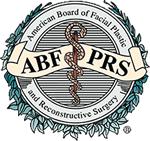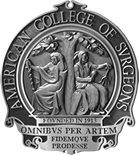Mole and skin tag removal can safely remove unattractive lesions, growths, or moles. There are many types of lesions or imperfections on the skin which can make you feel self-conscious. Typical examples are benign moles, skin tags, cysts, or lipomas (fatty benign tumors). The removal of these minor imperfections can be extremely gratifying and can restore your confidence. Most procedures are done in-office with topical numbing cream and minimal discomfort. Some procedures require sutures, but many skin lesion or mole removal procedures do not. A majority of patients also experience little downtime after a skin tag or mole removal procedure. It is possible that some moles that appear to be benign may not be. Dr. Zimbler’s extensive experience with skin cancer surgery may help in diagnosing such growths.
Is mole, skin tag, or cyst removal right for me?
Mole, skin tag, or cyst removal may be right for you if you have a blemish that you wish to safely remove. If you would like smooth, blemish-free skin, mole, skin tag, and cyst removal can help to remove irregularities. Dr. Zimbler can examine a mole and determine if it needs additional medical screening or if it can safely be removed through mole removal surgery. Dr. Zimbler can also remove skin tags through the processes of cryotherapy, lancing, or cauterization. With mole, skin tag, and cyst removal, Dr. Zimbler can help remove these blemishes, leaving only smooth, even skin.
Mole, skin tag, or cyst removal procedure:
A mole or skin tag removal procedure depends on what type of skin growth or irregularity you are having removed, such as a mole, skin tag, or other skin imperfection. Each procedure varies in length depending on the quantity of skin tags or skin growths being removed. Most of these procedures can be performed in-office with Dr. Zimbler. Although recovery time is dependent on what procedure you are having and the quantity of moles or skin tags being removed, most patients experience little to no downtime after surgery.
Mole removal:
There are 3 main types of moles (nevi) that include congenital moles, acquired moles, and atypical moles. Congenital moles are defined as a mole that you have had since birth. Congenital moles are also known as congenital nevi. Acquired moles, as the name implies, are nevi that you develop during childhood and adolescence. Acquired moles are thought to be your skin’s response to excessive sunlight. Finally, atypical moles, also called dysplastic nevi, are moles that are shaped irregularly and larger than an average mole. While dysplastic nevi can cause a higher risk of skin cancer, not every irregular mole is cancerous. Regular skin examinations are suggested to monitor moles. If you have an irregular mole, it is important to meet with Dr. Zimbler in order to rule out any possibility of skin cancer.
| Mole Types | |
| Congenital Moles | Moles that you have had since birth |
| Acquired Moles | Moles that you develop throughout life |
| Atypical Moles | Irregularly shaped or larger moles |
Most moles are medically harmless, but many patients desire to remove an unsightly mole to improve their overall appearance. On the other hand, some moles may need to be removed if Dr. Zimbler thinks that a mole is dangerous or unhealthy. Dr. Zimbler will numb the area with a local anesthetic before beginning your mole removal surgery. During your mole removal, Dr. Zimbler will make sure to completely remove the mole while leaving as much healthy surrounding tissue as possible. In some cases, stitches may be needed after removing a mole. If Dr. Zimbler thinks a mole may be something more, he will send a biopsy out to be tested to confirm if it is benign or malignant.
Please contact us immediately if a mole is:
- Asymmetric
- Continues to change in shape, size, and color
- Larger than the diameter of a pen
- Multiple colors
- Irregularly bordered
- Prone to bleeding, itching, or pain
Skin tag removal:
Skin tags are benign growths on the skin that form in the folds of skin, especially on the neck, face, and around the eyes. Skin tags can be a variety of sizes and colors, but they are denoted by a cluster of excess skin attached to your body through a stalk. While genetics can cause you to have skin tags, you may be more likely to have skin tags if you are overweight. Skin tags also increase in quantity with age.
There are a few ways that Dr. Zimbler can remove skin tags. Some techniques include freezing a skin tag (cryotherapy), lancing, or cauterization. There is very little pain with cryotherapy, but you may feel a mild stinging sensation when the liquid nitrogen is applied to your skin tag. After skin tag cryotherapy, your skin tag will still remain, but after your skin tag removal, the skin tag will fall off and the area will begin to heal. In some cases of larger skin tags, Dr. Zimbler may suggest surgically removing the skin tag. Prior to your skin tag removal, Dr. Zimbler will numb the area with a local anesthetic. Dr. Zimbler will then remove the skin tag. Some patients experience slight discomfort during skin tag surgery. Mild bleeding may occur depending on the size of your skin tag. Dr. Zimbler can also cauterize your skin tag using an electric current through a wire. This will cauterize the stalk or base of the skin tag, which will cause the skin tag to fall off. It is very uncommon for a skin tag to grow back after being cauterized.
Cyst removal:
There are 2 main types of cysts called epidermoid cysts and sebaceous cysts. Sebaceous cysts affect the sebaceous glands in the body and are less common than epidermoid cysts. On the other hand, epidermoid cysts can be composed of keratin or fat. These cysts commonly form on the face and neck, as well as your upper body. Epidermoid cysts are also more commonly occurring in men rather than women. While most cysts do not hurt, you may experience some tenderness, soreness, or irritation associated with a cyst, especially if it is in a sensitive area. Some cysts may diminish on their own, but other cysts may continue to grow or persist. Some patients want to have a mole removed for cosmetic reasons, but some moles, especially those that are painful or become infected, have to be removed for your general wellbeing.
Dr. Zimbler will apply a local anesthetic to the cyst prior to your cyst removal. After the surgical site has been numbed, Dr. Zimbler will make a very small incision on the surface of the cyst to begin your cyst surgery. Dr. Zimbler may remove the contents of the cyst by applying slight pressure and will then remove the entire cyst wall. When Dr. Zimbler removes the entire cyst wall, there is a much lower chance of the cyst recurring or growing again. In most cases, stitches are not needed because the incision for your cyst removal surgery is very small.
Mole, skin tag, or cyst removal recovery time:
Your recovery time depends on which procedure you undergo. If you have multiple cysts or moles removed in 1 procedure, your recovery time is likely to be slightly elongated. It is common for some patients to experience slight tenderness, discomfort, mild bruising, or swelling after a mole, skin tag, or cyst removal surgery. There is virtually no downtime after these procedures, as the use of local anesthesia makes for a quicker recovery period. Showering is permitted 24 hours after surgery. Most patients are able to return to their daily activity immediately following a skin tag or mole removal. In some cases of a large cyst being removed, a patient may need 1 day to recuperate. Scarring is minimal or nonexistent depending on what procedure you receive.


















